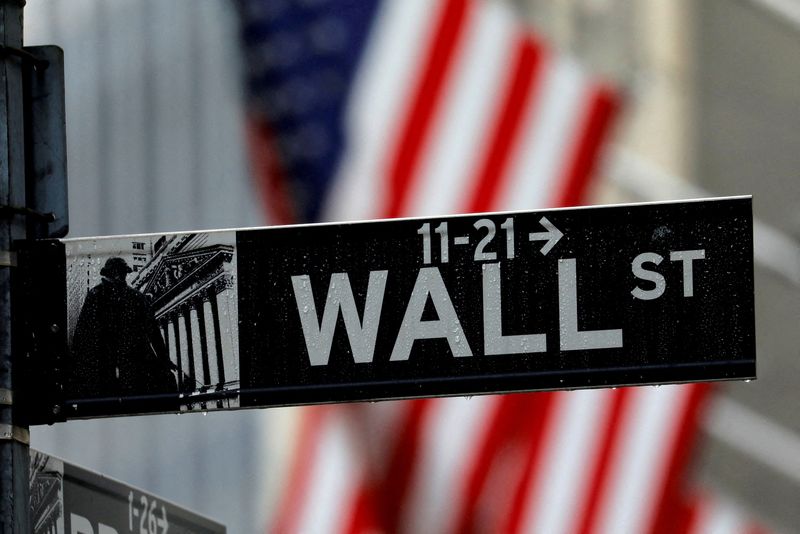© Reuters
By Scott Kanowsky
Investing.com — As traders in many countries begin to return from their Easter holidays, here are five themes to look out for in financial markets on Monday, April 10.
1. U.S. futures hover near flatline as key inflation data looms
U.S. stock futures held mostly steady ahead of a week that will see the release of crucial economic data, including a fresh look at consumer and producer prices in the world’s largest economy.
At 05:20 ET (09:20 GMT), the contract was up just 7 points, traded 0.01% lower, and edged down by 21 points or 0.17%.
Asian shares inched slightly higher, with the MSCI’s broadest index of regional stocks excluding Japan moving up by 0.43% and adding 0.42%. Markets remained closed in Hong Kong, Australia, and Europe for Easter Monday.
Attention is set to turn once again to inflation, with economists predicting that consumer prices rose by and in March. The core figure, which strips out volatile food and energy costs, is projected to have risen by and . The data is due out on Wednesday.
The number will likely impact the expectations for a potential easing in the Federal Reserve’s recently aggressive monetary policy campaign. Traders will have a chance to sift through the minutes from the U.S. central bank’s policy meeting in March as well.
Also factoring into sentiment was a closely watched March labor market report which showed that the pace of hiring in the U.S. remained strong and edged lower. The New York Stock Exchange was closed on Friday when the Labor Department data was released.
2. IMF meets with inflation on the mind
The International Monetary Fund and World Bank will hold their annual spring meeting in Washington this week. The high-powered gathering of central bankers and finance chiefs is expected to focus on measures to corral elevated price growth while also preserving stability in a rattled global banking system.
The IMF’s outlook isn’t exactly rosy. In a curtain-raising speech last week, the fund’s managing director Kristalina Georgieva flagged that the world economy will likely experience several years of slow growth, citing an uptick in geopolitical tensions and the risk of greater trade protectionism between major countries.
Highlighting the list of speakers at the event in the coming days are U.S. Treasury Secretary Janet Yellen and Bank of England governor .
3. Banking turmoil fallout
Big banks are due to get the ball rolling on the second quarter earnings season later this week.
JPMorgan (NYSE:NYSE:) and Citigroup (NYSE:NYSE:) are scheduled to report on Friday, followed by Goldman Sachs (NYSE:NYSE:), Morgan Stanley (NYSE:NYSE:) and Bank of America (NYSE:NYSE:) the week after.
Much of the spotlight will likely be shined on the impact felt by the collapse of Silicon Valley Bank last month. The failure led to shudders throughout the financial services industry, as investors particularly fretted over the possibility of wide-scale bank runs at smaller regional lenders.
A measure of calm has since returned to the industry. But the upcoming results will likely provide a fresh glimpse into the magnitude of the fallout from the recent turmoil.
4. Chinese IPOs surge under new listing rules
The first set of Chinese stocks to hold their initial public offerings under a new, more relaxed regime of listing rules soared on Monday, in a sign that the regulations may help boost China’s position as a major destination for worldwide stock trading.
Leading the gains among the 10 stocks to debut with this updated system was electronics distributor Shenzhen CECport Technologies Co., which surged by as much as 239%.
Chinese firms are now able to make their debut on the main boards of the stock exchanges of Shanghai and Shenzhen without needing to get regulatory approval first. Limits on IPO pricing at 23 times earnings per share were also axed. Caps on gains made on the inaugural day of trading were removed as well.
The change to a so-called “registration-based listings system” has been seen as a device to allow firms from more traditional sectors in China to benefit from a set of regulations that had long benefitted the country’s fast-growing technology companies. Fundraising for these more traditional businesses, as a result, could potentially become easier.
5. Oil stabilizes as demand uncertainty offsets OPEC+ production cut
Crude prices were largely steady to start out the week, as traders gauged the outlook for supply in the wake of a surprise output reduction by OPEC and its allies.
By 05:10 EST, futures rose 0.32% to $80.96 a barrel, while moved higher by 0.21% to $85.30 per barrel.
Crude surged by over 6% last week following an announcement from OPEC+ earlier this month that it would embark on a fresh round of production cuts in May. , meanwhile, dropped by more than expected.
But the outlook for demand remains somewhat uncertain, with traders keen to assess what the U.S. inflation data on Wednesday will mean for broader global growth.








































